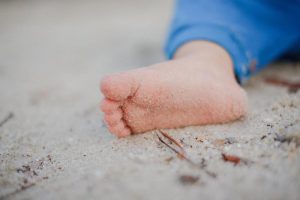 What is Haglund’s deformity?
What is Haglund’s deformity?
Haglund’s deformity is a common foot condition where a bony bump begins to form at the back of the heel bone where the Achilles tendon attaches to the heel.
The bony protrusion can cause severe pain while walking or wearing shoes as the bone rubs against the shoe.
This may cause the soft tissue at the heel to become irritated and may lead to another podiatry condition known as bursitis. Bursitis is a condition where the bursa, a fluid-filled sac between the Achilles tendon and bone, becomes inflamed and aggravated.
Causes
This condition often occurs when there’s frequent pressure on the back of the heels. It can be caused by wearing shoes that are too tight or rigid in the heel. This includes skates, men’s dress shoes, women’s dress shoes, and steel-toed work boots.
Heredity may also play a role in the development of Haglund’s deformity as inherited foot structures may increase your risk if you have a high arched foot, a tight Achilles tendon, or a tendency to walk on the outside of your heel.
What are the symptoms of Haglund’s deformity?
Haglund’s deformity can occur in one or both feet with symptoms ranging from mild to severe. These symptoms may include:
- A noticeable bump on the back of the heel
- Pain in the area where the Achilles tendon attaches to the heel
- Swelling in the back of the heel or bursa
- Redness near the inflamed tissue
Diagnosis
Haglund’s deformity can be difficult to diagnose with symptoms alone because the symptoms can be similar to other associated foot issues such as Achilles tendonitis.
After discussing the patient’s symptoms, our podiatrist will examine your foot and heel. Additional tests and screenings such as an X-Ray or MRI may help to evaluate the structure of the heel bone.
Non-surgical treatments
Non-surgical treatments for Haglund’s deformity are aimed at reducing inflammation or pain and removing pressure off the heel bone. Though these options may remove the symptoms of Haglund’s deformity, they do not shrink or remove the bony protrusion. These treatments may include:
- Medication such as nonsteroidal anti-inflammatory drugs such as ibuprofen can help to reduce pain and inflammation.
- Icing the heel for 20-40 minutes a day can reduce swelling and relieve pain
- Exercises to stretch and alleviate tension from the Achilles tendon can be beneficial for those who have a tight heel.
- Heel lifts can help those with high arches decrease the amount of pressure put on the heel while wearing shoes
- Heel pads can be placed inside the shoe to cushion the heel area and reduce friction and irritation when walking
- Wearing backless or soft-backed shoes to minimize irritation and friction along the heel
- Physical therapy including ultrasound therapy and soft tissue massages to alleviate tension in the heel area
- Orthotic devices such as custom arch supports may help to control the motion of the foot when walking or wearing shoes
- Immobilization by a cast or boot may be necessary in some cases to remove pressure off the heel
Surgery
If conservative treatments do not provide adequate relief or if the condition is too severe, surgical intervention may be necessary.
During this surgery, the doctor will remove the excess bone from the heel and smooth or file down the bone if necessary, to remove pressure on the heel. Surgery can also repair a damaged tendon as a result of Haglund’s deformity.
After surgery, it may take several months for you to completely heal and a cast or boot may be prescribed to protect your foot during recovery. A walking aid such as a walker or crutches may also be prescribed to you to help you move during recovery without placing pressure on the heel.
Follow up appointments will be scheduled throughout your recovery to ensure that your heel is healing properly.
Prevention
You can lower your risk for developing Haglund’s deformity by wearing shoes that fit properly and using aids such as pads and orthotic supports to prevent friction, tension, and irritation. Remember to stretch before and after exercising, paying careful attention to the Achilles tendon to prevent tightening.
If you are experiencing severe heel pain, please seek medical attention as this condition can worsen if left untreated. For more information on Haglund’s deformity or to schedule an appointment, please contact our office today.

